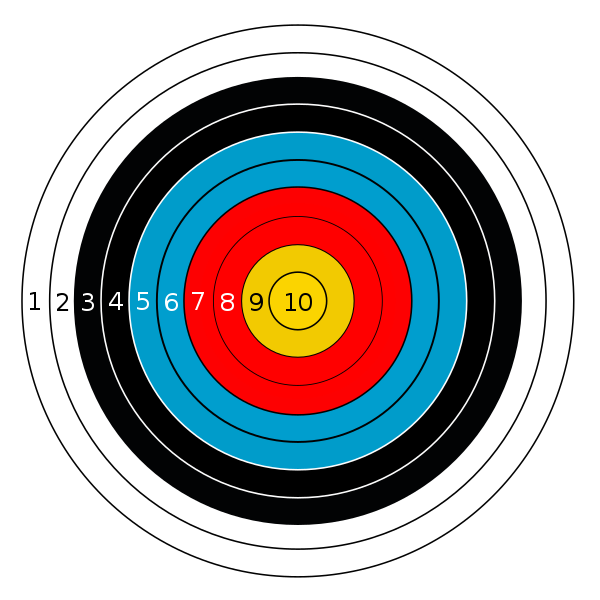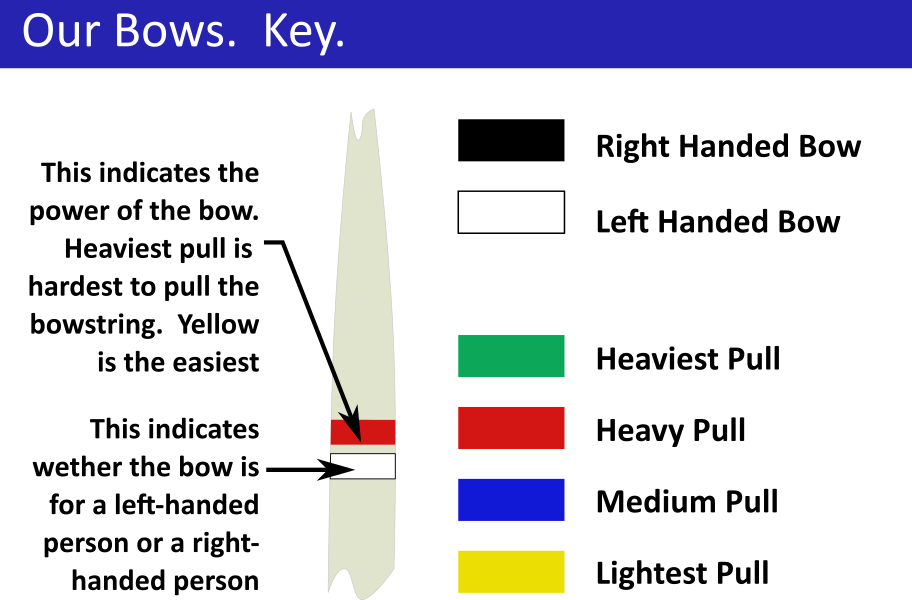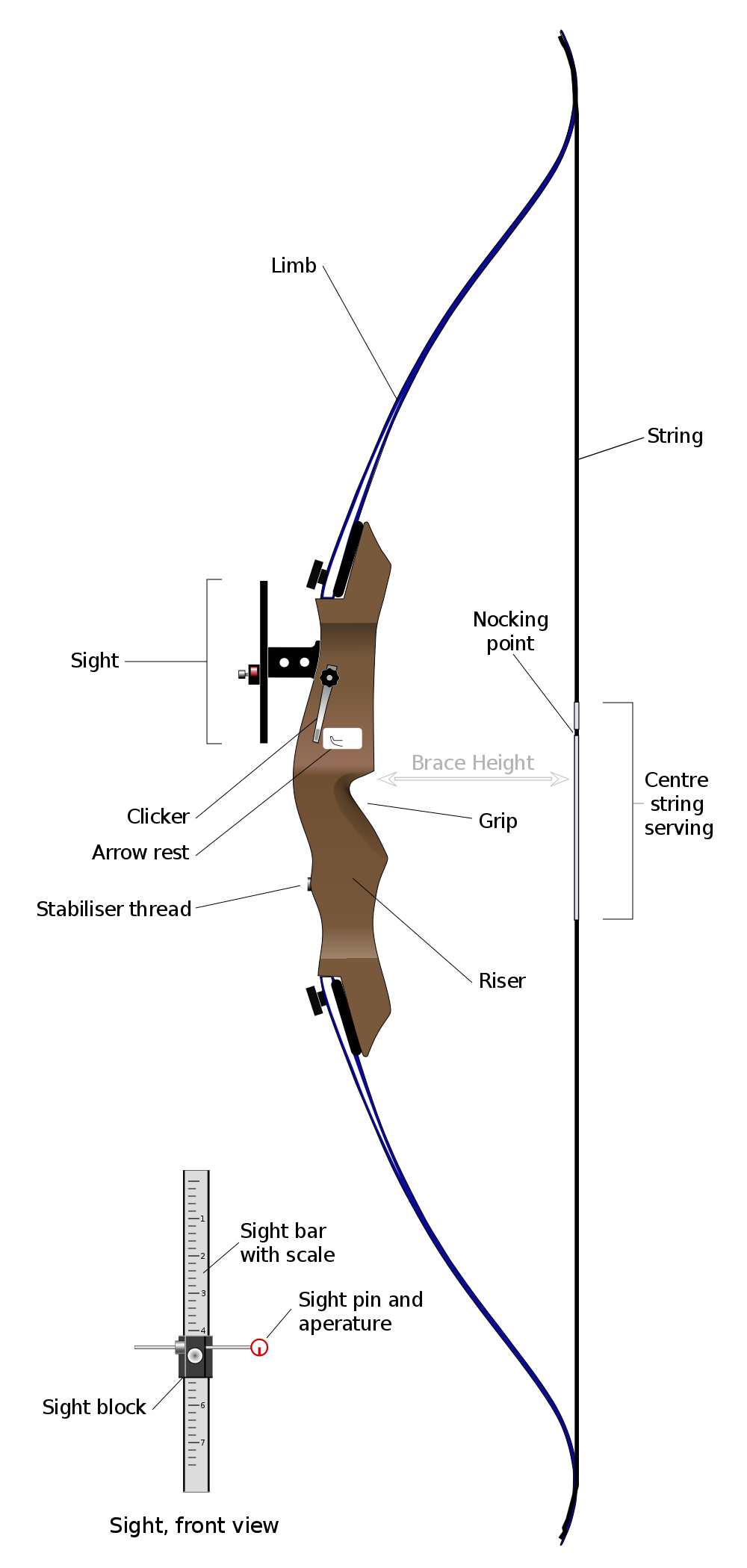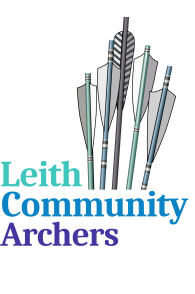Maybe you are new to archery, or perhaps you are a seasoned expert, no matter which here is some information on archery equipment.
Target Archery (Indoor and Outdoor)
Leith Community Archers are a Target Archery club. This style of archery is featured in the Olympic games and can be practiced both indoors and outdoors. Target Archery is probably the most popular kind of Archery, and because it's easy to set up with the correct archery equipment, is the one that most people are more familiar with.
Target archery consists of shooting an arrow at a stationary target with a gold bullseye in the centre. Other types of a target can be used recreationally. The gold-centered World Archery(WA) standard bullseye target you can see below is the most common and the most widely known.
The WA (World Archery) is the international governing body for the sport of archery previously known as the FITA target (Federation Internationale de Tira).

WA (was FITA) Target
A key bit of archery equipment is targets. Targets come in different sizes and these are used for different shooting distances. At a longer distance, you need a larger target face to aim at. Common target sizes and their shooting distances (in brackets) are listed below. The target size refers to the diameter of the outer or largest ring on the target:-
- 40cm (18m Indoor)
- 60cm (25m Indoor)
- 80cm (30m and 50m Outdoor)
- 122cm (70m and 90m Outdoor)
A bullseye or central gold ring shot is worth 10 points as shown in the image above. The further the target ring is from the centre of the target the lower the score.
The most common types of bow used are Recurve, compound, and barebow. Other types of bow: Crossbow.
Recurve bow
Recurve bow - A bow with limbs that curve away from the archer when unstrung. A recurve bow stores more energy. It delivers this energy more efficiently than the equivalent straight-limbed bow, giving a greater amount of energy and speed to the arrow. Again a key piece of archery equipment
Arrow rest - Where the arrow rests during the draw. These may be simply fixed rests or may be spring-loaded or magnetic flip rests.
Back - The face of the bow on the opposite side to the string is called the back. The face or belly of the bow on the same side as the string
Bow sight - An aiming aid attached to the riser
Brace height - The distance between the deepest part of the grip and the string; fistmele is the traditional term. Fistmele refers to the equivalent length of a closed fist with the thumb extended. This was traditionally used to indicate the proper distance between the deepest part of the grip and the string.
Grip - The part of the bow held by the bow hand
Riser - The rigid centre section of a bow to which the limbs are attached
Limbs - The upper and lower working parts of the bow. They come in a variety of different poundage and there is a top and a bottom limb
Nocking point - The place on the bowstring where the nock (end) of an arrow is fitted.
String - The cord that attaches to both limb tips and transforms stored energy from the limbs into kinetic energy in the arrow
Sling - A strap or cord attached to the bow handle, wrist, or fingers to prevent the bow from falling from the hand
Tab - or thumb ring A protection for the digits that draw the string. Also provides better release performance. Usually made of leather.
Tiller - The difference between the limb-string distances measured where the limbs are attached to the riser. Usually the upper distance is slightly more than the bottom one, resulting in a positive tiller. Reflects the power-balance between both limbs.
Stabiliser thread - for stabilisers



Arrow
The final bit of key archery equipment. An arrow consists of a long straight shaft with stabilisers called fletchings. There is a weighty (and usually sharp and pointed) arrowhead attached to the front end, and a slot at the rear end called the nock for engaging the bowstring.


